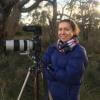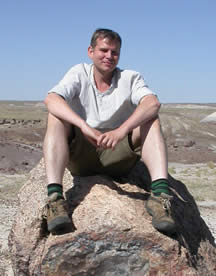Acoustic sensors enable efficient and non-invasive monitoring of a wide range of species, including many that are difficult to monitor in other ways. Although they were initially limited in application scope largely due to cost and hardware constraints, the development of low-cost, open-source models like the Audiomoth in recent years has increased access immensely and opened up new avenues of research. For example, some teams are using them to identify illicit human activities through the detection of associated sounds, like gunshots, vehicles, or chainsaws (e.g. OpenEars).
With this relatively novel dimension of wildlife monitoring rapidly advancing in both marine and terrestrial systems, it is crucial that we identify and share information about the utility and constraints of these sensors to inform efforts. A recent study identified advancements in hardware and machine learning applications, as well as early development of acoustic biodiversity indicators, as factors facilitating progress in the field. In terms of limitations, the authors highlight insufficient reference sound libraries, a lack of open-source audio processing tools, and a need for standardization of survey and analysis protocols. They also stress the importance of collaboration in moving forward, which is precisely what this group will aim to facilitate.
If you're new to acoustic monitoring and want to get up to speed on the basics, check out these beginner's resources and conversations from across the WILDLABS platform:
Three Resources for Beginners:
- Listening to Nature: The Emerging Field of Bioacoustics, Adam Welz
- Ecoacoustics and Biodiversity Monitoring, RSEC Journal
- Monitoring Ecosystems through Sound: The Present and Future of Passive Acoustics, Ella Browning and Rory Gibb
Three Forum Threads for Beginners:
- AudioMoth user guide | Tessa Rhinehart
- Audiomoth and Natterjack Monitoring (UK) | Stuart Newson
- Help with analysing bat recordings from Audiomoth | Carlos Abrahams
Three Tutorials for Beginners:
- "How do I perform automated recordings of bird assemblages?" | Carlos Abrahams, Tech Tutors
- "How do I scale up acoustic surveys with Audiomoths and automated processing?" | Tessa Rhinehart, Tech Tutors
- Acoustic Monitoring | David Watson, Ruby Lee, Andy Hill, and Dimitri Ponirakis, Virtual Meetups
Want to know more about acoustic monitoring and learn from experts in the WILDLABS community? Jump into the discussion in our Acoustic Monitoring group!
Header image: Carly Batist

- 0 Resources
- 2 Discussions
- 1 Groups
This latest chapter in the Conservation Technology Series from WWF-UK looks at the opportunities, challenges and state-of-the-art of satellite remote sensing for conservation applications. This issue reviews available...
23 April 2018
Hundreds of people joined our #Tech4Wildlife photo challenge this year, showcasing all the incredible ways tech is being used to support wildlife conservation. We've seen proximity loggers on Tasmanian Devils in...
3 March 2018
Our panel of international experts has been hard at work reviewing the 47 proposals we recieved for innovative technological tools to address human wildlife conflict. The panelists have systematically been assessing the...
20 October 2017
The inherent complexity of not only deploying technologies in the field but also doing so in a scientifically rigorous manner can prove a substantial barrier for the effective use of conservation technologies, and clear...
11 October 2017
Its been a busy couple of months for the Open Acoustic Devices team. They've just returned back from Belize where they have been trialling the new AudioMoth design for gunshot detection. Find out what they've been up to...
27 June 2017
Are you ready for this year's #Tech4Wildlife Photo Challenge? In anticipation, we're counting down our ten favourite entries from last year. Do you think you can top these?
1 March 2017
The Conservation Leadership Programme (CLP) is a training and capacity building programme that targets individuals from developing countries who are early in their conservation career and demonstrate leadership...
21 November 2016
Do you work on conserving Neotropical migratory birds? Do you need funding? Why not apply for a grant from the U.S. Fish and Wildlife Service through the Neotropical Migratory Bird Conservation Act's grant program? The...
8 November 2016
Caves don't tend to be well-liked ecosystems, being extremely dark, often quite cramped, and slippery. And the creepy-crawlies that live within them can be the stuff of nightmares. Nevertheless, one's attitude towards...
25 July 2016
More than half of all primate species are endangered, including our closest living relative, the chimpanzee. Could Passive Acoustic Monitoring (PAM) be applied to primates as well as it has been for other taxa? In this...
29 June 2016
Since 2013, volunteer citizen scientists taking part in the Norfolk Bat Survey have generated over 1.2 million bat recordings, making this one of the most extensive high-quality datasets for bats collected by citizen...
5 February 2016
New horizon scanning report published this month identifies 15 emerging threats and opportunities for global biodiversity.
3 February 2016
June 2025
July 2025
September 2025
event
October 2025
November 2025
event
61 Products
| Description | Activity | Replies | Groups | Updated |
|---|---|---|---|---|
| Hi Mona. Yes, this is what we certainly what we are considering, but how to measure these indices by the hands of non-experts in the field is the advice that I need from the WL... |
|
Acoustics | 1 day 7 hours ago | |
| Would that be able to process locally stored acoustic data? One of the great things about birdnet analyzer is that it is local - it doesn't require uploading terabytes... |
|
Acoustics | 3 days 22 hours ago | |
| Do you collect or use sound recordings of habitats or species like birds, frogs, mammals, or insects in India? We need your expertise!... |
|
Acoustics | 1 week 2 days ago | |
| My name is Frank Short and I am a PhD Candidate at Boston University in Biological Anthropology. I am currently doing fieldwork in Indonesia using machine-learning powered passive... |
|
Acoustics, AI for Conservation, Animal Movement, Data management and processing tools, Early Career, Emerging Tech, Ethics of Conservation Tech, Protected Area Management Tools, Software Development | 2 weeks ago | |
|
|
Latin America Community, Acoustics, AI for Conservation, Camera Traps, Drones, Early Career | 2 weeks 6 days ago | ||
| There are a lot of parameters in principle here. The size of the battery. How much time in the field is acceptable before a visit? Once a week? Once a month? How many devices you... |
|
Acoustics | 3 weeks 1 day ago | |
| Hi Tom! I think the furry windjammer must be outside the casing to have the desired effect. It can be a bit tricky having this nice furry material that birds and other critters... |
|
Acoustics | 3 weeks 3 days ago | |
| Hi Lana,"similar field setup" means that the vocalizing animal should be surrounded by the recorders and you should have at least 4 audiomoths recording the same sound, then the... |
+9
|
Acoustics | 3 weeks 3 days ago | |
| Fantastic! Can't wait to hear updates. |
|
Acoustics | 4 weeks 1 day ago | |
| New stable release : v1.5.1We are pleased to announce the latest release with several important enhancement, fixes and documentation improvements to ensure compatibility with the... |
+15
|
Acoustics, AI for Conservation, Open Source Solutions, Software Development | 1 month 1 week ago | |
| Hello everyone,Thank you all for your contribution!You can read some updates about this project in this post.Julia |
|
Acoustics, Community Base, Data management and processing tools, Open Source Solutions | 1 month 2 weeks ago | |
| Hi Ryan, hmm, I had no idea there was a microphone named that. I thought about how it’s used to lure birds for netting, and I like Greek Mythology. I thought it was a perfect fit... |
|
Acoustics, Emerging Tech, Funding and Finance, Protected Area Management Tools, Software Development | 1 month 2 weeks ago |






























